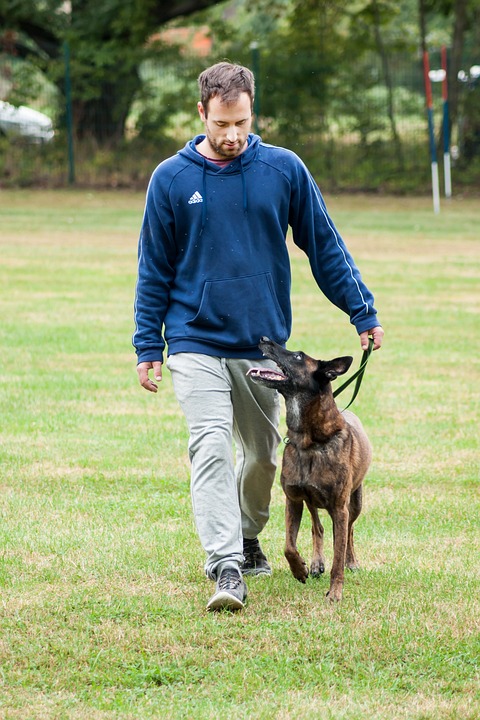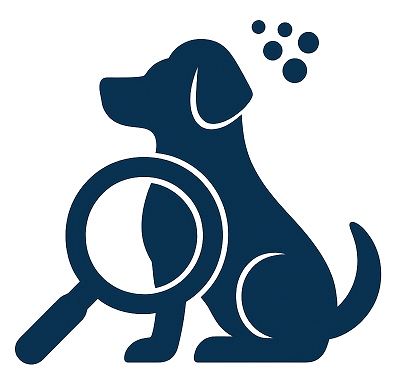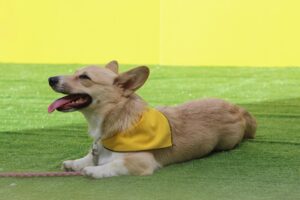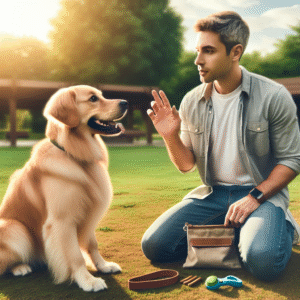
“`html
Introduction to Advanced Leash Training for Adult Dogs
Leash training is a crucial aspect of ensuring that your dog is both manageable and safe during walks. While basic training is typically covered during puppyhood, adult dogs can benefit significantly from advanced leash training. Whether you’re dealing with a newly adopted adult dog or looking to refine the skills of a long-time companion, advanced leash training can enhance your dog’s walking experience, boost their confidence, and strengthen the bond between you and your furry friend.
Understanding the Basics Before Advancing
Before diving into advanced techniques, it’s essential to ensure that your dog has a solid foundation in basic leash training. Your dog should be comfortable wearing a collar or harness, understand basic commands like “sit,” “stay,” and “heel,” and be able to focus on you despite distractions. If these skills are not yet mastered, it’s advisable to revisit basic training to ensure a smooth transition to more advanced techniques.
Advanced Techniques for Leash Training
1. Mastering Loose-Leash Walking
Loose-leash walking is a fundamental skill that prevents your dog from pulling and allows for a more enjoyable walking experience. To advance this skill:
– **Use a Cue Word**: Introduce a specific cue, such as “easy” or “steady,” to remind your dog to keep the leash slack.
– **Stop and Go**: If your dog begins to pull, stop walking immediately. Wait until the leash is loose, then proceed. This teaches your dog that pulling will stop forward motion.
– **Reinforce with Rewards**: Use treats or verbal praise when your dog walks by your side with a loose leash. Consistency is key in reinforcing this behavior.
2. Teaching Directional Commands
Directional commands such as “left,” “right,” and “turn” are useful for navigating various walking environments:
– **Introduce Commands Gradually**: Start with one directional command at a time. Use treats to guide your dog in the desired direction while using the verbal cue.
– **Practice in a Controlled Environment**: Begin training in a quiet area with minimal distractions. Gradually increase the complexity of the environment as your dog becomes more proficient.
– **Reinforce with Praise**: Consistently use positive reinforcement when your dog responds correctly to directional commands.
3. Incorporating Impulse Control
Impulse control is crucial for ensuring your dog can manage excitement and distractions:
– **Practice “Leave It” and “Wait” Commands**: These commands teach your dog to resist urges, whether it’s lunging at a squirrel or pulling towards another dog.
– **Use Controlled Exposures**: Gradually introduce distractions during walks, such as other dogs, cyclists, or joggers. Use commands to maintain focus and calmness.
– **Reward Calm Behavior**: Reinforce calm and controlled behavior with treats, toys, or praise, ensuring your dog understands the expected conduct.
4. Utilizing Advanced Equipment
Advanced leash training can benefit from specialized equipment designed to enhance control and communication:
– **Head Halters**: These devices can provide better control over strong pullers, allowing you to gently guide your dog’s head and redirect attention.
– **No-Pull Harnesses**: Designed to discourage pulling, these harnesses can be particularly effective for large or strong dogs.
– **Long Lines for Recall Training**: A long line can be used in controlled environments to practice recall commands while providing freedom to explore.
5. Enhancing Engagement and Focus
A key component of advanced leash training is ensuring your dog remains engaged and focused on you:
– **Incorporate Training Games**: Use games such as “find it” or “touch” to keep your dog mentally stimulated during walks.
– **Practice Attention Exercises**: Regularly practice having your dog make eye contact with you on command. This strengthens focus and reduces distractions.
– **Vary Your Route and Routine**: Keep walks interesting by changing routes and incorporating new environments, which can prevent boredom and encourage engagement.
Addressing Common Challenges in Advanced Leash Training
Even with diligent training, some challenges may arise. Understanding and addressing these challenges can enhance the effectiveness of your training:
Dealing with Reactivity
– **Identify Triggers**: Understand what causes your dog’s reactive behavior, whether it’s other animals, vehicles, or specific environments.
– **Desensitization and Counter-Conditioning**: Gradually expose your dog to triggers while maintaining a safe distance and rewarding calm behavior.
– **Consult a Professional**: If reactivity persists, consider seeking the help of a professional trainer experienced in behavior modification.
Managing Overexcitement
– **Pre-Walk Calming Routine**: Establish a routine to calm your dog before heading out, such as practicing obedience commands or using calming aids.
– **Structured Walks**: Maintain a structured pace and routine during walks to reduce overstimulation.
– **Frequent Breaks**: Allow for short breaks during walks to prevent overwhelming your dog, especially in high-stimulation environments.
The Importance of Consistency and Patience
Consistency and patience are the cornerstones of successful advanced leash training. Dogs thrive on routine and clear expectations, so it’s crucial to maintain consistent cues, rewards, and corrections. Additionally, progress may be gradual, particularly for adult dogs with established habits. Celebrate small victories and remain patient as your dog learns and adapts.
Conclusion: Strengthening the Human-Canine Bond
Advanced leash training for adult dogs is more than just a set of skills; it’s an opportunity to deepen the bond between you and your dog. By investing time and effort into advanced training, you not only improve your dog’s behavior and walking experience but also cultivate trust, communication, and mutual respect. With dedication, patience, and the right techniques, you can transform your daily walks into a harmonious and enjoyable experience for both you and your canine companion.
“`













